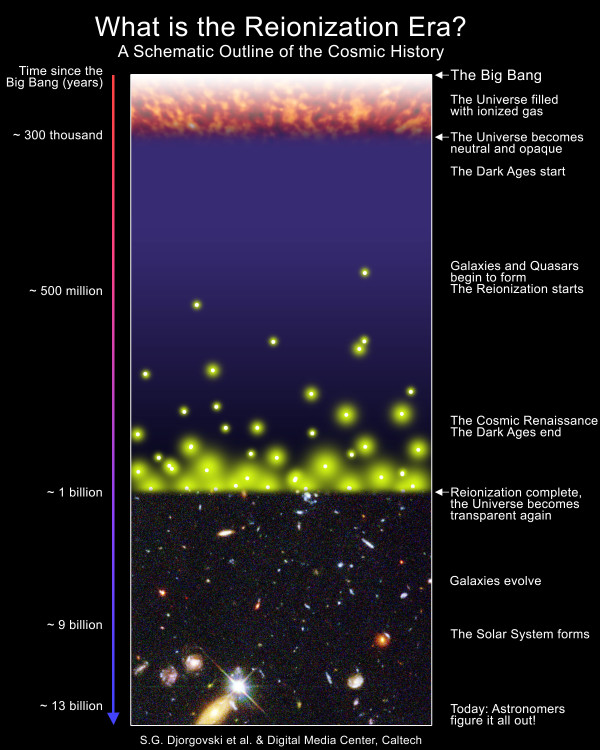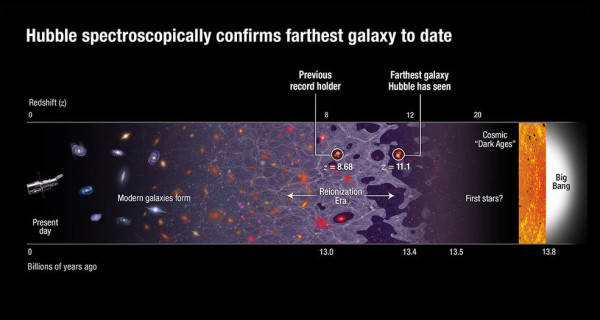"Our spectroscopic observations reveal the galaxy to be even farther away than we had originally thought, right at the distance limit of what Hubble can observe." -Gabriel Bremmer
One of the holy grails of cosmology is to measure, directly, exactly when the first stars and galaxies formed in our Universe. The Hubble Space Telescope has been pushing the distance record farther and farther back, with its measurements typically confirmed by ground-based, spectroscopic follow-ups. This time, however, the new record-holder was so distant that confirmation needed to be done from space: by Hubble itself.
 Schematic diagram of the Universe’s history, highlighting reionization. Image credits: S. G. Djorgovski et al., Caltech. Produced with the help of the Caltech Digital Media Center.
Schematic diagram of the Universe’s history, highlighting reionization. Image credits: S. G. Djorgovski et al., Caltech. Produced with the help of the Caltech Digital Media Center.
The result? A galaxy at a redshift of z=11.1, from when the Universe was just 400 million years old, or a mere 3% of its current age. This is a record that will likely stand until the James Webb Space Telescope launches, as it took a combination of incredible work and incredible luck to find a galaxy this far back with our current technology.
 Hubble spectroscopically confirms farthest galaxy to date.
Hubble spectroscopically confirms farthest galaxy to date.Image credits: NASA, ESA, and A. Feild (STScI).
Go get the full story, and learn why this was so unlikely (and how we got lucky), over on Forbes!
